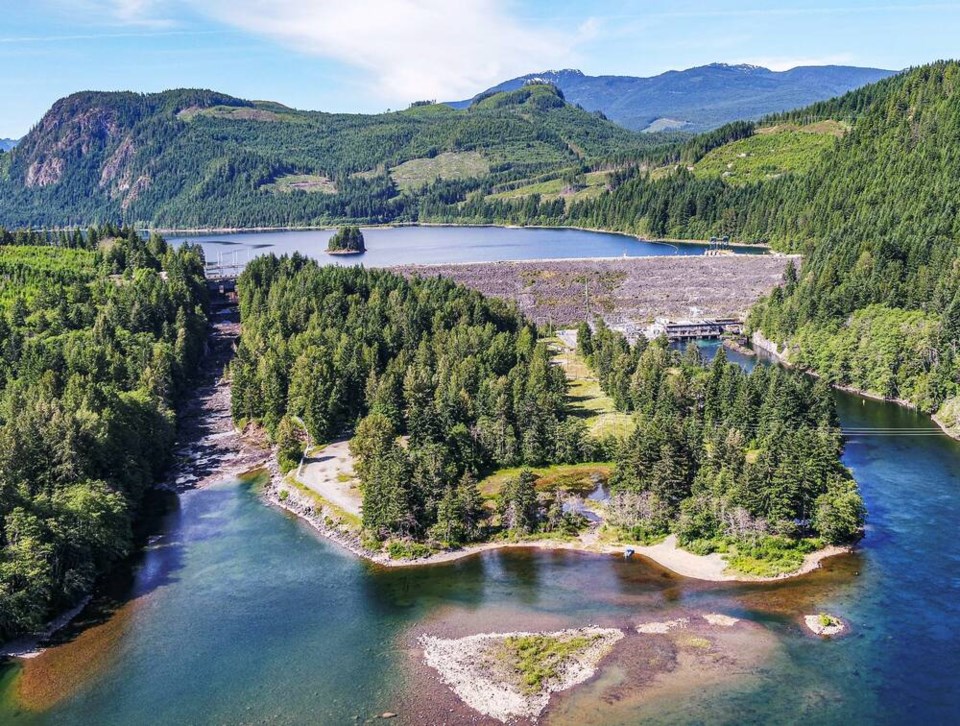Proposed seismic upgrades to the Strathcona and Ladore dams on the Campbell River hydroelectric system, along with an already approved project to strengthen the John Hart dam, could cost a total of $1.17 billion to $1.74 billion, according to B.C. Hydro estimates.
In June, B.C. Hydro submitted proposals for Strathcona and Ladore improvements to the B.C. Utilities Commission for approval.
The commission earlier gave the green light to seismically upgrade the John Hart dam, estimated to cost $646 million to $923 million. The cost range covers the time from when the project was initiated in 2014 to its completion in 2030.
For the Ladore project, cost estimates run from $225 million to $344 million, while the Strathcona project range is $302 million to $474 million.
Once the three projects are completed, the facilities will be able to continue to safely pass water downstream following a major earthquake or during a major flood, said B.C. Hydro spokesperson Stephen Watson. “These projects are about downstream public safety.”
The three projects follow the completion of the John Hart Generating Station Replacement Project, which cost about $1 billion and was finished in 2018.
The Strathcona project is needed for dam safety and to allow B.C. Hydro to lower the reservoir water level after a major event if necessary, Watson said. It would replace or upgrade seismically deficient structures and components of the dam’s spillway area, he said. Spillways are used to discharge extra water in a controlled way.
A channel would be created in rock on the right side of the dam, forming a low-level outlet that would be about 330 metres long, 29 metres wide and 17 metres deep. Two gates in a concrete structure would be located within the new channel, Watson said.
The earth-fill Strathcona Dam is 53 metres tall and 500 metres long. Water from the Upper Campbell Reservoir/Buttle Lake system enters an intake upstream of the dam, passing through to a 64 megawatt powerhouse on the downstream side.
The Ladore spillway seismic upgrade project has been designed to bolster the facility’s ability to withstand an earthquake and to make the spillway gates system more reliable.
A new spillway gate power supply, with controls and telecommunications, would be installed. The spillway area would be anchored to bedrock, strengthening its ability to survive an earthquake.
The concrete Ladore Dam is about 38 metres tall and 95 metres long. Water from the Lower Campbell Reservoir/McIvor system enters a 520-metre-long tunnel in rock and flows to the 47 megawatt powerhouse downstream.
Water from the Ladore facility runs into the John Hart Reservoir.
Provided the commission approves the Ladore and Strathcona projects, work would start in early 2025 and is expected to be completed in 2028, Watson said.
The two projects would likely result in a total of 180 jobs per year, B.C. Hydro said.
Work on the John Hart dam seismic project will begin this month and could generate about 100 to 150 jobs per year, it said.
Since 2014, B.C. Hydro, the City of Campbell River and the Strathcona Regional District have partnered to educate citizens living downstream of the potential risk from a major earthquake, Watson said.
That includes development of brochures, kiosks and evacuation area maps. The overriding message is: “If it knocks you down, go to high ground.”



